
© John Lauener/National Ballet of Canada. (Click image for larger version)
www.abt.org
Wikipedia on Les Sylphides
Les Sylphides, Michel Fokine’s diaphanous Chopin ballet, was revolutionary in part because it did away with the idea that a ballet needed a plot, but also because it was set to non-ballet music – i.e. the kind of music one might hear at a recital hall. In its earliest form, as performed at the Mariinsky in St. Petersburg in 1907 (with the name Chopiniana), the ballet hinted at dramatic situations from Chopin’s life. But Fokine soon re-imagined it as an abstract reverie that drew loosely upon motifs from Romantic ballets like Giselle and La Sylphide. This second version, set to a new selection of Chopin pieces (only the waltz in C-sharp minor op. 64 was kept) was staged, first for the Mariinsky, and then, with some adjustments, for Diaghilev’s Ballets Russes. Its delicate, even at times ecstatic mood finds its musical counterpart in a nocturne, three waltzes, two mazurkas, and a prelude, all written for the piano. Over the years they have been subjected to many orchestral adaptations. The Russian Romantic composer, Alexander Glazunov, was the first to adapt them for orchestra; Maurice Keller, a repetiteur at the Mariinsky, was mainly responsible for the second version. And for the Ballets Russes première, in June of 1909 at the Théâtre du Châtelet, Diaghilev had three of his pet composers – Stravinsky, Tcherepnin, and Liadov – re-set the score.
In 1936, the British pianist and composer, Roy Douglas, had his go. For many companies, including American Ballet Theatre, his has become the standard text. Douglas’s orchestral texture is on the thick side, symphonic, heavy on the horns. It lacks intimacy. But ABT programs from the early seventies list another attribution: Benjamin Britten, the composer of Billy Budd and Peter Grimes. According to recent research, it turns out that Britten was commissioned by the company to create his arrangement of the Chopin pieces in 1941. But at some point in the last decade or two – no-one knows exactly when or why – it fell out of use. The score was lost in the company’s archives. (A New York Times piece about the search for the score explains that the confusion about its whereabouts stemmed in part from the fact that Britten’s name did not appear on the cover.) People gradually forgot about the origin of the orchestration.
But this summer, after the dance historian, David Vaughan, inquired after the Britten version he remembered fondly, ABT’s music administrator, David LaMarche, went back to the archives. He found it hiding in plain sight, with only the trumpet part attributed to Britten. It was duly sent off to the Britten-Pears Foundation for verification. Mystery solved, at least in part. During the company’s fall season at the David Koch Theatre, the orchestra, under the baton of LaMarche and Ormsby Wilkins (conducting alternate casts) returned to the Britten orchestrations.

© Gene Schiavone. (Click image for larger version)
Recently, I spoke with ABT’s music director, Ormsby Wilkins. I was curious what he thought of Britten’s score.
MH: How do the versions differ?
OW: The first thing is that the Britten is written for a smaller orchestra. There are only two horns, instead of four, and one trombone. It’s much more intimate. That’s the most striking thing. The prelude is just strings and a harp. And there’s no triangle.
MH: The Britten seems sparer, but there are those harp glissandos…
OW: I noticed the harp glisses really pop out in that hall. I guess he decided it needed a little color here and there. Certainly it’s much less than the Roy Douglas. Most of the harp writing is very discreet.
MH: It has an almost chamber music feel.
OW: Yes, and the woodwind writing is more characterful. The Douglas is much thicker. It’s big and heavy. And it has too much percussion. It’s not appropriate to the intimacy of the ballet. Britten got the tone right.
MH: The Britten sounds more classical.
OW: Yes, I totally agree. Basically, most of the time he just said, “I’m going to keep this simple.” Every so often he adds in little extra motifs in the texture that are not Chopin. There are little counter-phrases that are rather lovely, very tasteful. You almost don’t hear them. In the pas de deux, there’s a lovely cello line. In the woodwinds, you’ll hear little filigree things that are not Chopin. For me, the most charming aspect is the woodwind writing. He uses the trumpets a little bit more in the faster section of the nocturne, in the texture. But other than that they’re used very discreetly.
MH: Is there anything particularly “Britten-like” about the score?
OW: The way he combines and overlays the woodwinds, that’s a very Britten-esque thing. But it’s certainly not typical Britten. It was probably just a job he was given. He was paid $300 for it and gave over the rights completely.
MH: Orchestrations of Les Sylphides can be so lumbering. The piano pieces are much more delicate.
OW: I guess from Fokine’s point of view, he thought that using an orchestra gave the music the right dream-like quality. People have tried to perform the ballet to solo piano and it doesn’t work. It doesn’t support the whole picture of the ballet. It needs those extra colors. I’ve also heard a version for piano and orchestra, and that doesn’t work either.

© John Lauener/National Ballet of Canada. (Click image for larger version)
MH: How are you enjoying the Koch Theatre? ABT last performed there in the seventies, when it was still the New York State Theatre.
OW: I’ve been very happily surprised. The acoustics are quite different from the Met. As much as we love the Met, it’s not ideal for symphonic music. The resonance in the hall is sometimes a little more than we would like. I’ve been pleasantly surprised by how delightful the sound is. There’s much more clarity in the strings. And of course City Center [where the company usually holds its fall season] has a tiny pit. Almost half of it is underneath the stage. The last time we did Gong, we had to put the two pianos backstage because we couldn’t fit them in the pit.
MH: The dancers’ steps are much more quiet at the Koch.
OW: Ooooh yes. [Laughs.] I was concerned about that with Twyla’s Bach Partita [which is accompanied only by a solo violin]. I’ve seen an old video from the Met, and the toe shoe noise… I can’t imagine what that was like for the violinist. The difference, of course, is that at the Koch, the dance floor is built into the stage, it doesn’t get laid on as it does at the Met. And how about that Charles Yang [the young violinist who is accompanying the revival of Bach Partita]? I’m incredibly impressed with him. He has everything, including the temperament to deal with the fact that the work was choreographed to a particular interpretation of the Partita [Jascha Heifetz’s]. I think he brings his own quality to the music, but he is willing to try things. He knows it all from memory, but because he’s accompanying dancers he brings in the score on his Ipad. He plays it all in the dark. The fingerboard is completely in the dark. Twyla loves it. It’s very unique what he does.






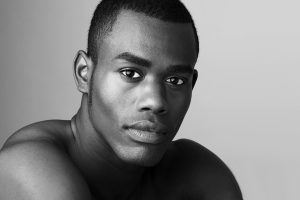



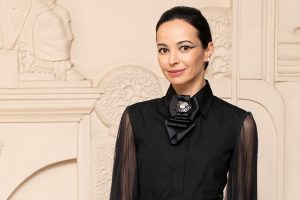
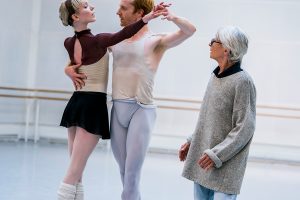
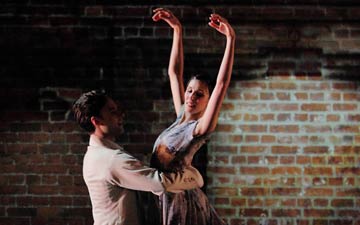



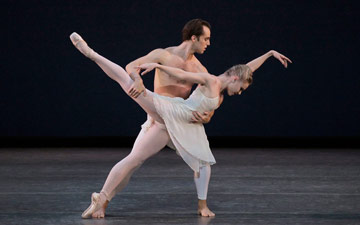
[…] I had a brief chat with ABT’s music director, Ormsby Wilkins, about the recently rediscovered Benjamin Britten orchestration of Les Sylphides that the company is using this season. How is it different from the one they were using before, by Roy Douglas? On first hearing I found it lighter, more classical, with more detailed voices. But I wondered whether the differences went deeper. You can link to the conversation here. […]
I have always wondered whether the recording of “Les Sylphides” by the Ballet Theater Orchestra, recorded some time in the 1950’s under Joseph Levine, used the Britten orchestrations, as to my [untutored] ears it seems quite different from the Roy Douglas orchestration usually heard in recordings. Another fascinating version would have been the one commissioned by the De Basil company and credited to Vittorio Rieti.
Dear Adrian, I understand that recording does in fact use the Britten orchestration. M
Many thanks, Marina, for clearing this up for me.